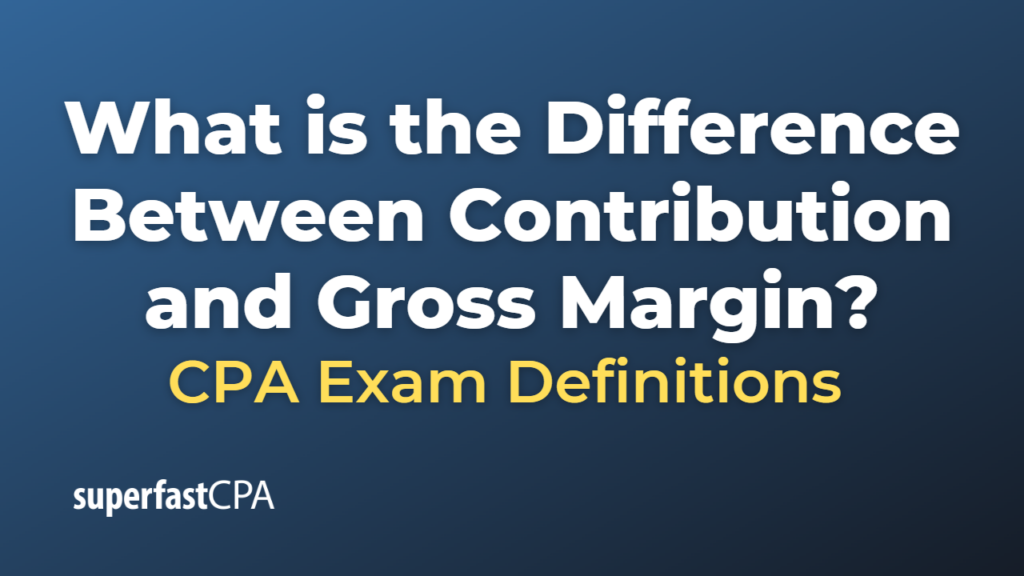Difference Between Contribution and Gross Margin
Contribution Margin and Gross Margin are two financial metrics that help a company assess profitability. They are similar in that they both consider the cost of producing goods or services relative to the revenue these goods or services generate. However, they differ in the types of costs they take into consideration:
- Contribution Margin: Contribution margin is the revenue remaining after subtracting the variable costs that go into producing a product. Variable costs can include direct materials, direct labor, and other costs that increase or decrease depending on the volume of units produced. The contribution margin is used to review the variable costs of production and how these costs impact the profitability of individual items.
- Gross margin: Gross margin, also known as gross profit margin, is the revenue remaining after subtracting the cost of goods sold (COGS). COGS include both variable and fixed costs directly related to the production of the goods sold, such as raw materials and direct labor. However, it does not include indirect costs like overheads, marketing expenses, or delivery costs. Gross margin provides a view of the overall profitability of a product or service, considering all costs directly related to its production.
In summary, the difference lies in the types of costs each one considers. Contribution margin only considers variable costs directly associated with the production of a product, while gross margin takes into account all direct costs (both fixed and variable) associated with producing the product. Both metrics are important in assessing a company’s profitability and making pricing, production, and sales decisions.
Example of the Difference Between Contribution and Gross Margin
Let’s consider a hypothetical company, “GadgetCo”, which manufactures and sells electronic gadgets.
Suppose GadgetCo sells each gadget for $200. The variable costs per unit – including costs for materials, labor, and other expenses that change with the production volume – amount to $50.
Contribution Margin:
The contribution margin per gadget would be the selling price minus the variable costs: $200 – $50 = $150. This means that for each gadget sold, GadgetCo contributes $150 towards covering its fixed costs and making a profit.
Now, suppose there are additional fixed production costs directly related to manufacturing, such as equipment depreciation and factory rent, which amount to $30 per unit.
Gross Margin:
The gross margin per gadget would be the selling price minus the cost of goods sold (which includes both variable costs and fixed production costs): $200 – ($50 + $30) = $120. This means that for each gadget sold, after considering both the variable and fixed production costs, GadgetCo makes a gross profit of $120.
In this example, the contribution margin gives GadgetCo an idea of how each unit sold contributes to covering fixed costs and profits, while the gross margin shows the overall profitability per unit after considering all production costs. Both these margins are important in determining the financial health of GadgetCo and in making decisions about pricing, production, and sales strategy.













